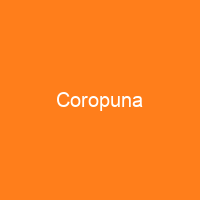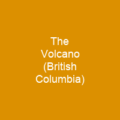Coropuna: A Majestic Summit in Peru’s Central Volcanic Zone
Imagine standing at the edge of a world where ancient myths intertwine with modern science, where towering peaks and deep valleys create a landscape both awe-inspiring and mysterious. Welcome to Coropuna, a dormant compound volcano located in the Andes mountains of southeast-central Peru. This majestic mountain is not just a geographical feature; it’s a living testament to the region’s rich history and ongoing geological processes.
The Mountain’s Elevation and Extent
Coropuna stands at an impressive 6,377 meters above sea level, making it the largest and highest volcano in Peru. Its pear-shaped outline with four summits separated by broad saddles covers an area of 240 square kilometers. The upper reaches are perennially snowbound conical summits, creating a breathtaking sight that has captivated explorers and scientists alike.
Geological History and Formation
The geological history of Coropuna is as fascinating as its current state. It began 5 million years ago and has been active for at least five million years. The volcano’s structure developed during the Quaternary period, with three distinct stages: Coropuna I (explosive eruptions), Coropuna II (lava flows from above 6,000m elevation), and potentially a third stage (Coropuna III). This complex formation has resulted in alternating layers of ignimbrite and lava, creating a unique landscape that continues to evolve.
Volcanic Activity and Hazards
Despite being dormant, Coropuna remains hydrothermally active with six hot springs. These springs not only provide insights into the volcano’s internal processes but also pose potential hazards such as lahars and volcanic blasts. The Peruvian government monitors these activities closely to ensure public safety.
The Ice Cap: A Tropical Gem
One of Coropuna’s most striking features is its ice cap, which covers an area of 8.5 km long and approximately 3 miles wide. This ice cap consists of three domes and many glaciers, with some perennial snow fields present on the mountain’s flanks. The ice cap has a thickness of up to 180 meters and contains permafrost at high elevations.
Glacial Retreat and Environmental Impact
The retreat of Coropuna’s ice cap is a pressing concern, with studies showing a net retreat trend since 1850. The retreat rates vary but are generally increasing due to global warming trends. This loss of ice has significant implications for the local water supply, affecting tens of thousands of people who rely on meltwater from these glaciers.
Historical and Cultural Significance
Coropuna holds a special place in both Inca mythology and modern Peruvian culture. It was considered a sacred site by the Incas, playing an important role in their religion and mythology as the fifth most holy site of the empire. The mountain is also paired with Solimana volcano, sometimes seen as a male entity while others see it as female.
Modern Exploration and Tourism
While Coropuna’s summit remains challenging to reach, it offers mountaineering opportunities for those willing to undertake the three-day ascent from Laguna Pallarcocha. The rugged terrain also provides unique insights into the region’s biodiversity, with various species of plants and animals adapted to its harsh conditions.
The Future of Coropuna
As we look towards the future, the challenges posed by climate change and glacial retreat loom large. The Peruvian government is preparing for a scenario where Coropuna ceases to contribute significantly to the local water supply by 2025. This underscores the importance of continued monitoring and adaptive strategies to mitigate the impacts on communities that rely on these natural resources.
Coropuna, with its rich history, ongoing geological processes, and cultural significance, continues to captivate us. It stands as a reminder of nature’s power and the delicate balance between human activities and environmental change. As we navigate this complex landscape, let us remember the lessons Coropuna teaches about resilience, adaptation, and the interconnectedness of our world.

You want to know more about Coropuna?
This page is based on the article Coropuna published in Wikipedia (retrieved on December 3, 2024) and was automatically summarized using artificial intelligence.







